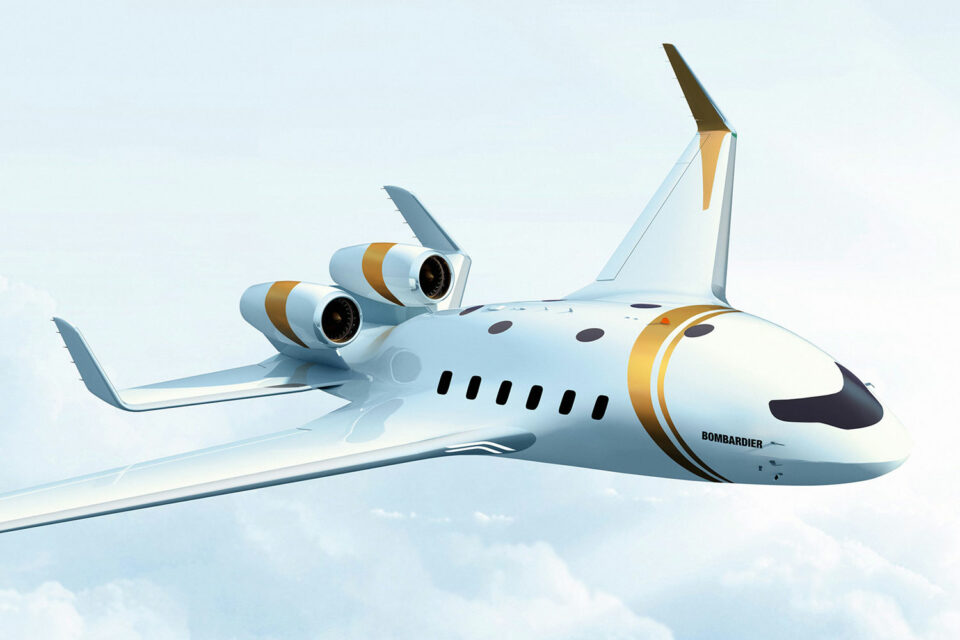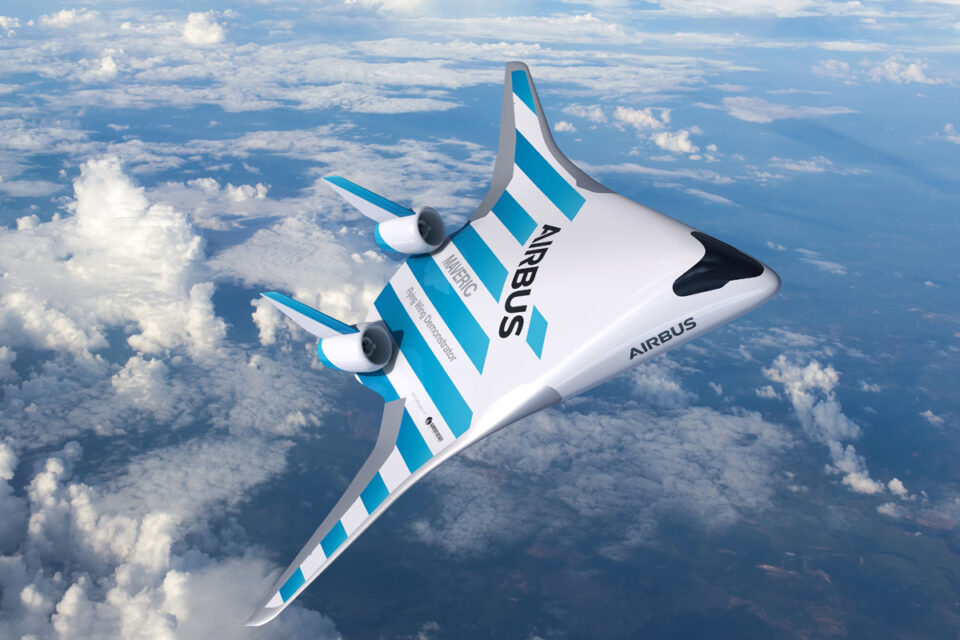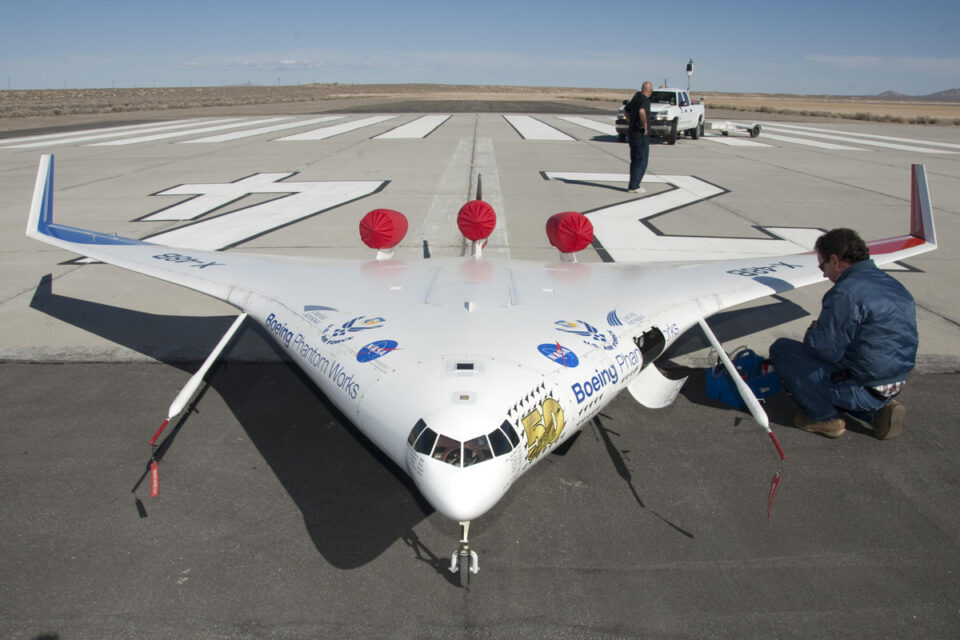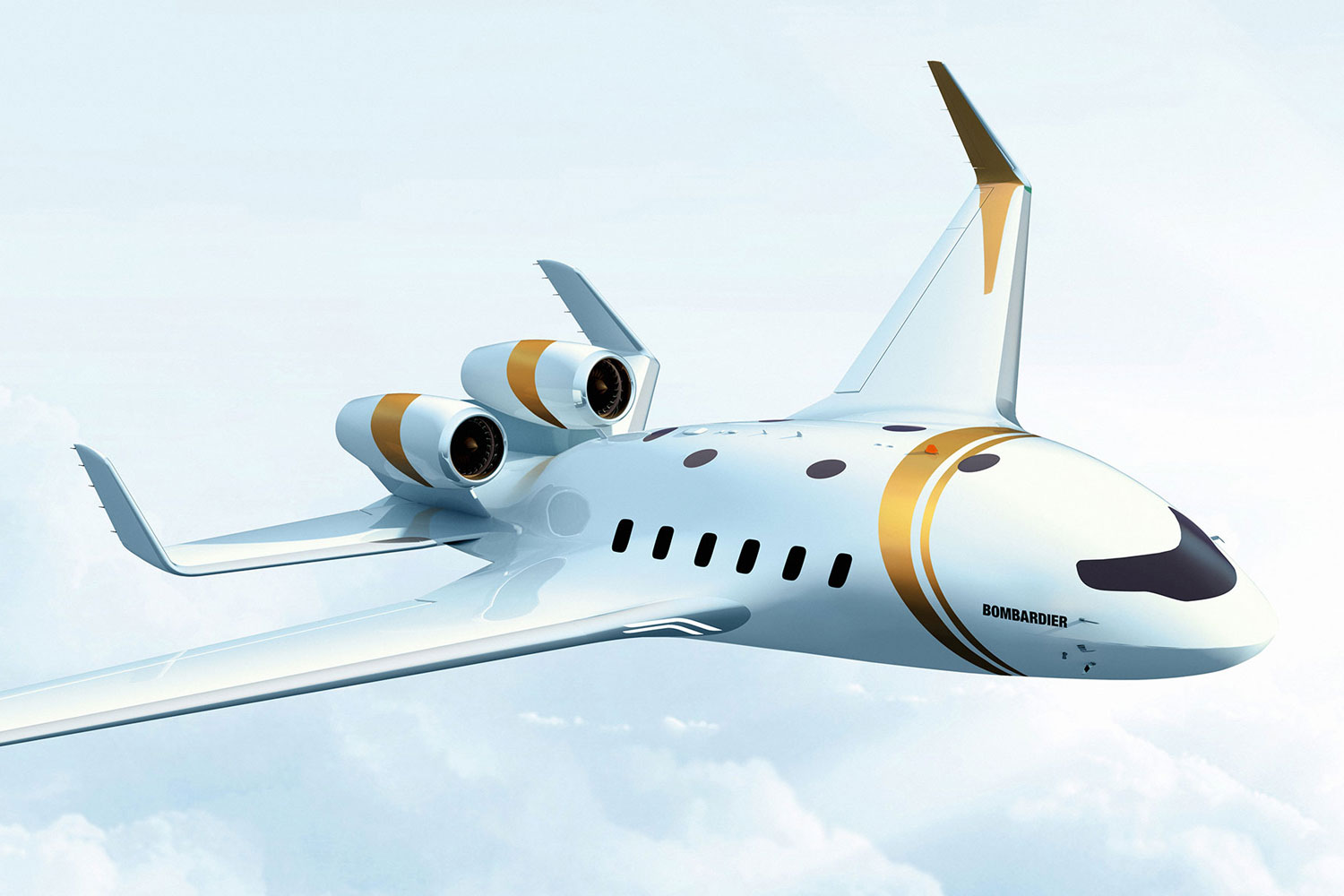Bombardier has released a video that deepens its study of the integrated fuselage or Blended-Wing-Body (BWB) jet, which has moved on to a second phase of testing with larger demonstrators.
Called EcoJet, the project is a proposal for business jets that mixes the concept of “flying wing”, which is best known in its military use, in a civil application. In this type of concept, wings and fuselage are mixed.
The Canadian planemaker says that the project can revolutionize the business jet market, with a new experience for passengers combined with the sustainability and economy provided by the new design.

The EcoJet was unveiled in May, still in its early stages with demonstrators measuring around 1.5 meters. In an interview with FlightGlobal, Bombardier’s director of research and technology, Benoit Breault, said that tests had already passed for demonstrator drones with a wingspan of 6 meters and that no impediment to moving forward with the study was found.
According to Breault, the EcoJet’s design allows the wings to be smaller, reducing weight and drag, which would require less fuel. In the concept image there are two traditional turbofan engines, but Bombardier is also evaluating new propulsion systems.
NASA studies

Bombardier is not the first to study Blended-Wing-Body aircraft. In 2020, Airbus showcased the Maveric concept at the Singapore Air Show, stating that the configuration has the potential to reduce fuel consumption by up to 20% compared to current single-aisle jets.
Boeing also studied a BWB prototype together with NASA, between 2007 and 2013. It was enough to start rumors that the manufacturer would launch a superjumbo with an integrated fuselage for up to 1,000 passengers.
The basic Blended-Wing-Body concept was first developed decades ago by the US Air Force.

Advantages and disadvantages
The integrated fuselage concept can provide more interior area in a configuration that would leave cumbersome, narrow aisles behind. The seats would be arranged like a theater, in a “V” shape.
However, the wings integrated into the fuselage do not leave much room for windows. In the Maveric concept, Airbus suggested installing very futuristic “virtual” windows in the passenger cabin.
For larger jets, cabin height is a challenge, as is installing emergency exits. Therefore, testing the model in executive jets is not such an unreasonable idea.


